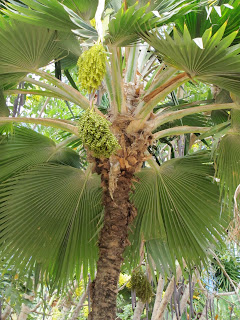Last Friday, I went to a conference at Monmouth University. The topic was
Building a Sustainable Future For New Jersey’s Coastal and Ocean Economy and was sponsored by the Jersey Shore Partnership and Monmouth's Urban Coast Institute. Various presenters spoke about their research, whether it was about offshore windmills, fisheries or the impacts of climate change on the coastal environment and a panel discussion followed.
It was a great conference, but I'm actually not blogging about those topics today. You see, the conference was held in Monmouth's historic
Wilson Hall. Upon entering the building, I swear I was hit with a sense of deja vu. Of course, that could have also been plain awe at the majesty of the building. It's an unassuming enough structure from the outside, much like other buildings on a college campus. But the atrium space was beautiful.
Commenting on the building to a companion, I was told this building was used for filming the movie version of
Annie. That explains why it was so familiar. In 1981, shortly before my family moved to Kuala Lumpur, my dad took me to see the stage production in Philly. It was probably - at that point - the most exciting night of my relatively short life. For years afterwards, while we endured long car trips to distant vacation spots on the Malay peninsula, my family had to endure repeated playings of the original broadway soundtrack.
I was bitterly disappointed when the film came out. I mean, I was pretty young, but I remember being
indignant (!!) at the liberties they took with the original story and changes they made to the songlist. Still, it could be watched on VHS, again repeatedly, so I made due with what I had and watched the movie often enough.
In any event, recently my family was discussing the musical and we played the soundtrack. It was hilarious to see my brother, now a grown man, remember lyrics to songs he hadn't heard since 1981. Some things just get imprinted on your brain, I suppose.
 |
| Tilework in the ladies' room - note the mosque design with minarets topped with crescent moons. |
In any case, it was a delight to see Wilson Hall. It's called such because Woodrow Wilson stayed there in 1916 during his campaign. It was designed by
Horace Trumbauer of Philadelphia, who also employed
Julian Abele on the project, who was the first professional African-American architect. Abele also worked on another building that's
fairly iconic in the movie world: the Philadelphia Museum of Art. If that previous link isn't enough youtube on your Monday morning, here's the scene in Annie
where she first visits Wilson Hall (or Daddy Warbucks' home).


















































